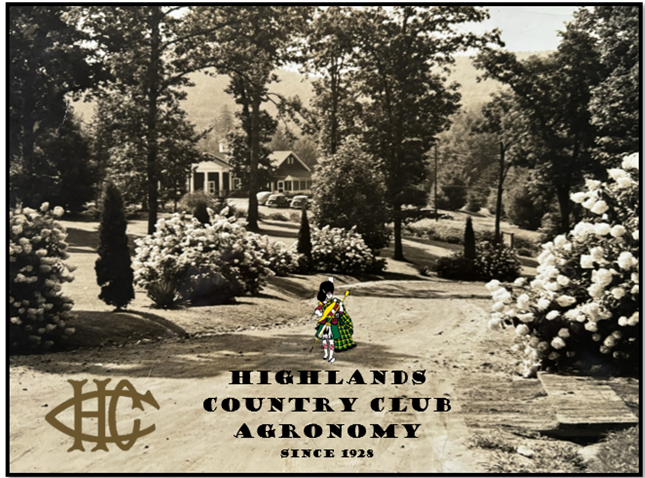While working at #6 pond, we got to appreciate the impressive yellow pine growing on the property next to it. I've never seen a tree this tall and straight in Highlands. It is one of two yellow pines that I know of on the property. It's certainly no exotic or valued species but you just don't see a lot on our campus; I cant speak for the whole Highlands area. Maybe there are a lot more that I'm not aware of.
Above and below, we started work on #6 pond enhancement. There were a lot of challenges with this thing for the last 20 plus years. The boat dock parking area washed out every time it rained. The roadside ditch, partially visible from the course, was an eyesore and the shrubs around the pond were overgrown. To start off, a 24" pipe was installed underground to carry this water away from the parking area. This allowed us to expand the parking area for boaters and increase the shoulder of the road for added safety. Stay tuned for the more impressive details of this project to come.
Below, #7 Jones tee had become so overgrown that it was a mess beyond the rhododendron. We cleaned up some of the rhododendron, had permission from the landowner to remove a couple dead hemlocks behind the tee and even had an extra telephone pole next to the tee, removed by the Town. This area will be much improved upon your return to HCC.
Below, we continue on limbing and removing several trees that were addressed in our Arborcom shade study and also approved by our Club Architect, Ron Forse. These really cold mornings are helping us because frozen ground is the best way to move heavy equipment around the property.
One of the under-brushing areas we addressed was the far side of the pond on #10. This area was very natural...a little too natural one could say. We cleaned up all the dead plant material and branches and now have a well kept and better looking pond backdrop. There is one medium sized dead Hemlock that needs to be removed back there. This was needed for a long time.
Beavers continue to be active in this area. If you recall, we contacted the State NC wildlife folks who came to the club and trapped four of them this past fall. While working on #10 we noticed a pile of debris, neatly placed by said beavers. Chad called the wildlife folks again and they will be back on site tomorrow morning to set more traps. The officer said you always can tell a beavers work based on the teeth marks on the branches (below) and the fact they gnaw the ends at near perfect 45 degree angles (above). I asked if they carried a protractor or miter gauge with them; come to find out, they don't. He also found no humor in my question. Interestingly, beavers only eat the bark of trees, not the wood in the tree. Apparently the bark has the nutrients they are in need of.
Below, this is a perfectly stacked pile of sticks and limbs by the beaver. If trained to stack these sticks in the proper spot, these guys could be effective members of my team!
We have about 100 tons of sand remaining to apply to fairways and approaches. Rather than doing one really heavy application, we will space it out in phases to allow the rain to washing it into the turf canopy. These lighter applications allow for a more even distribution.












